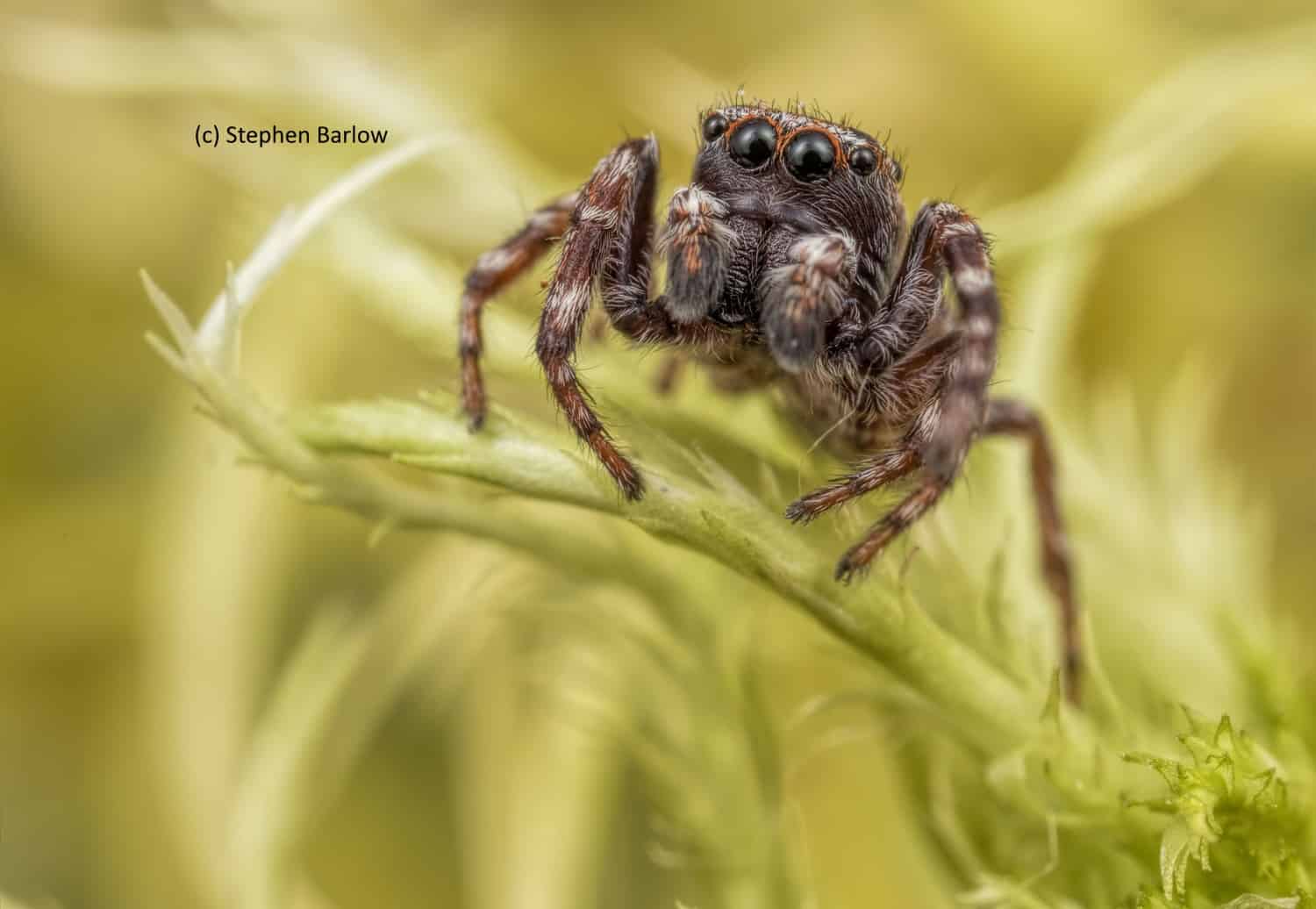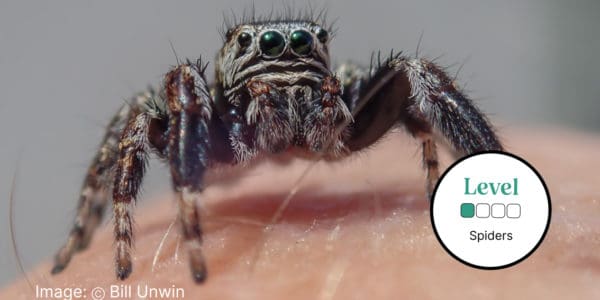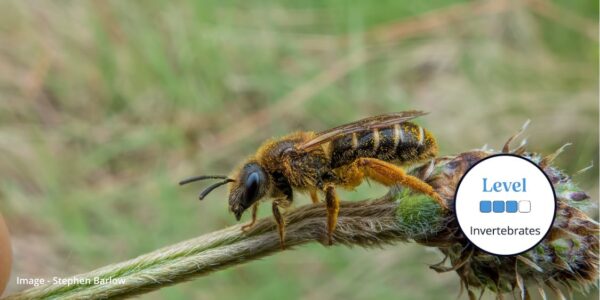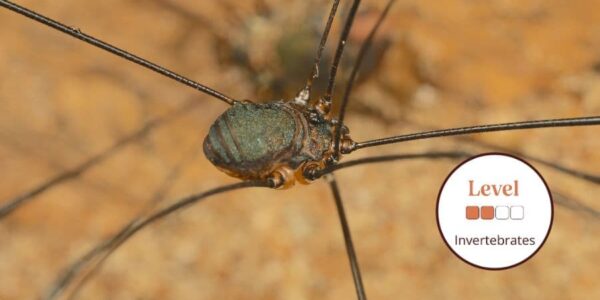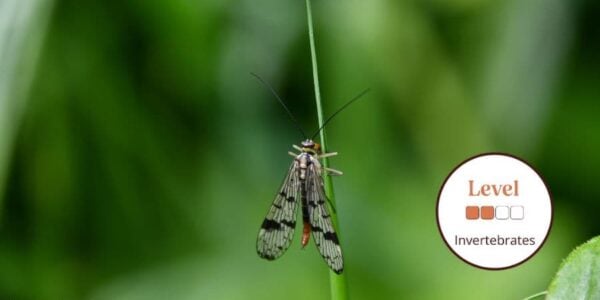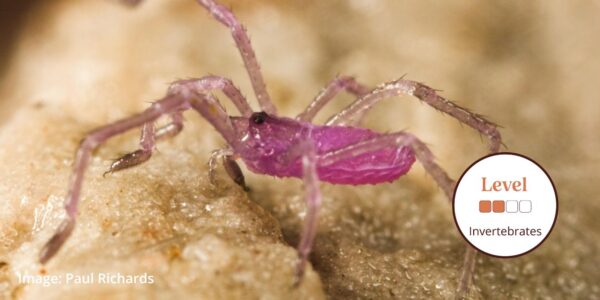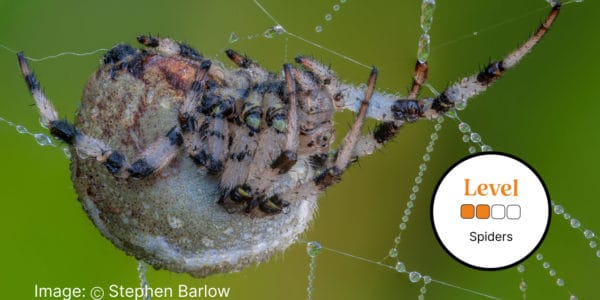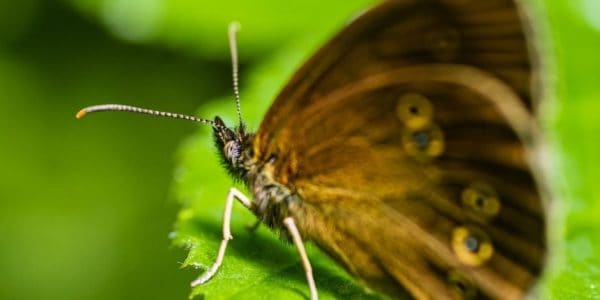
Discover more as you learn about UK arachnids and improve your skills on our beginner to advanced courses.
We run regular spider courses throughout the year delivered online and UK wide by expert tutors and follow a framework to progress your learning at a level to suit you.There are over 670 species of spider in the UK. Over half of these are tiny money spider species, some of which are only 1mm long.
Identification
Arachnid is the name given to a specific group of animals in the class Arachnida, which contains organisms such as spiders, scorpions, harvestmen, mites and ticks. Arachnids are separated from other groups (such as insects) by the following characteristics:
- The body is divided into 2 sections, the cephalothorax and the abdomen.
- 4 pairs of legs – Although some juvenile examples of mites (Acari) may have 3 pairs
- Two additional pairs of appendages (the chelicerae and pedipalps), located in front of the legs.
- Simple eyes (ocelli) – These are composed of a single lens.
- No wings or antennae.
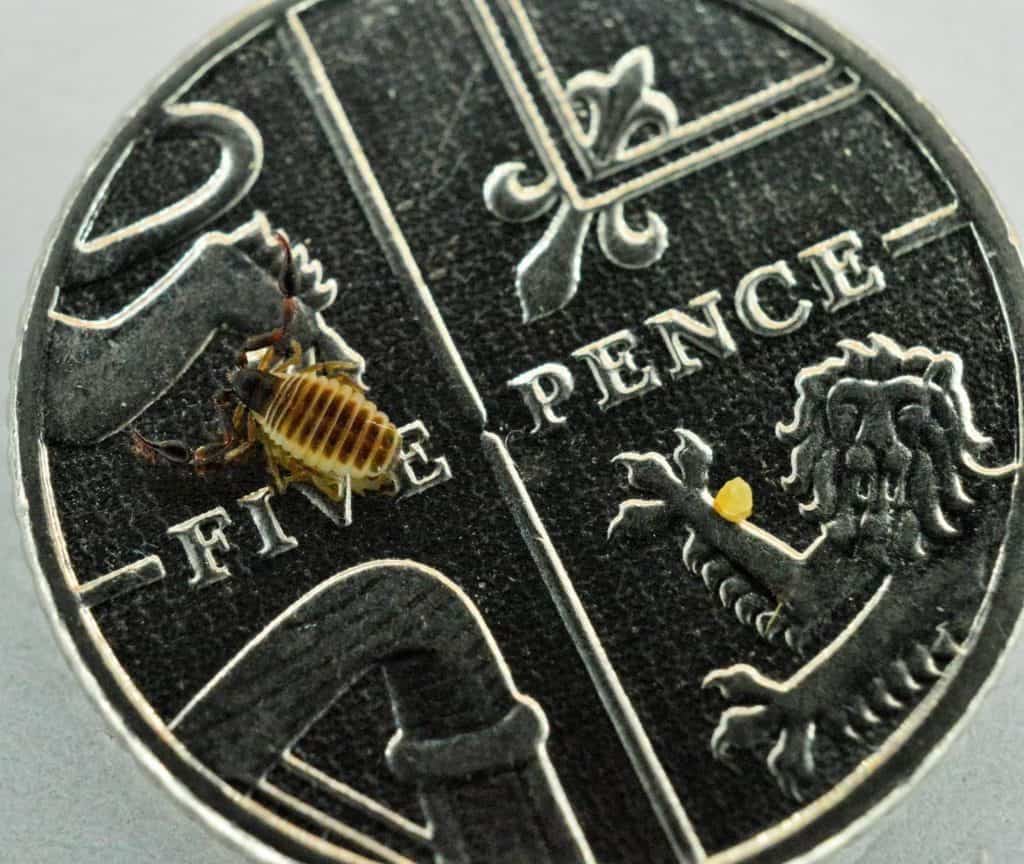
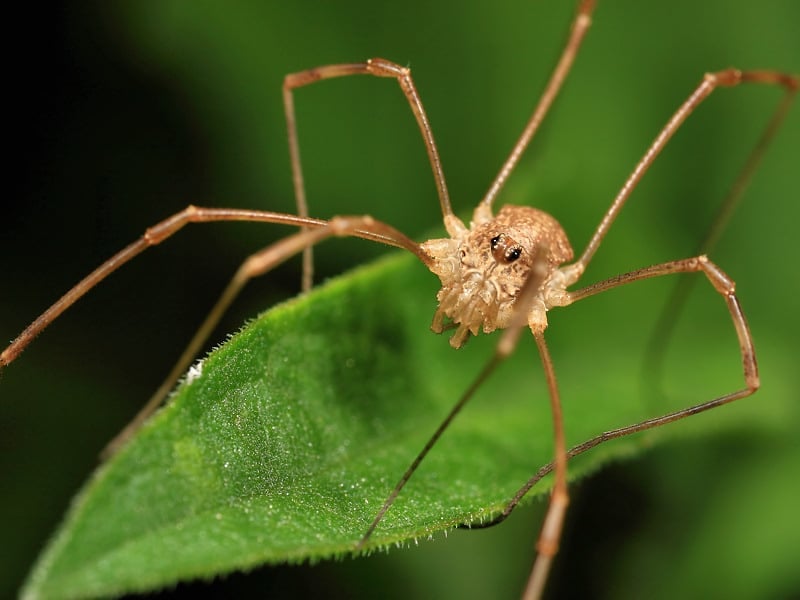
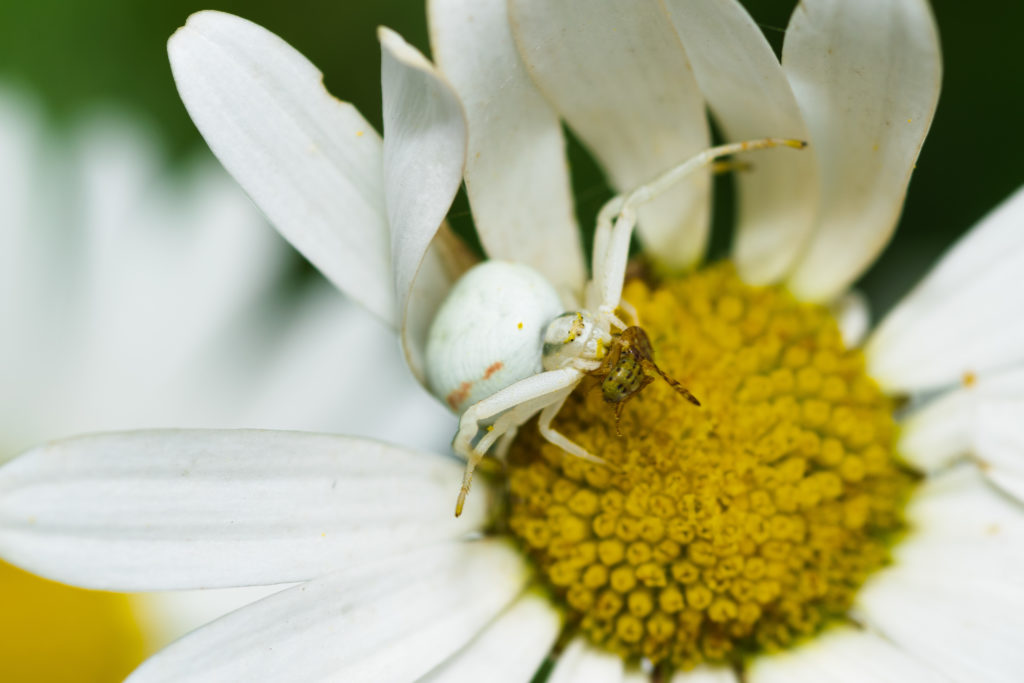
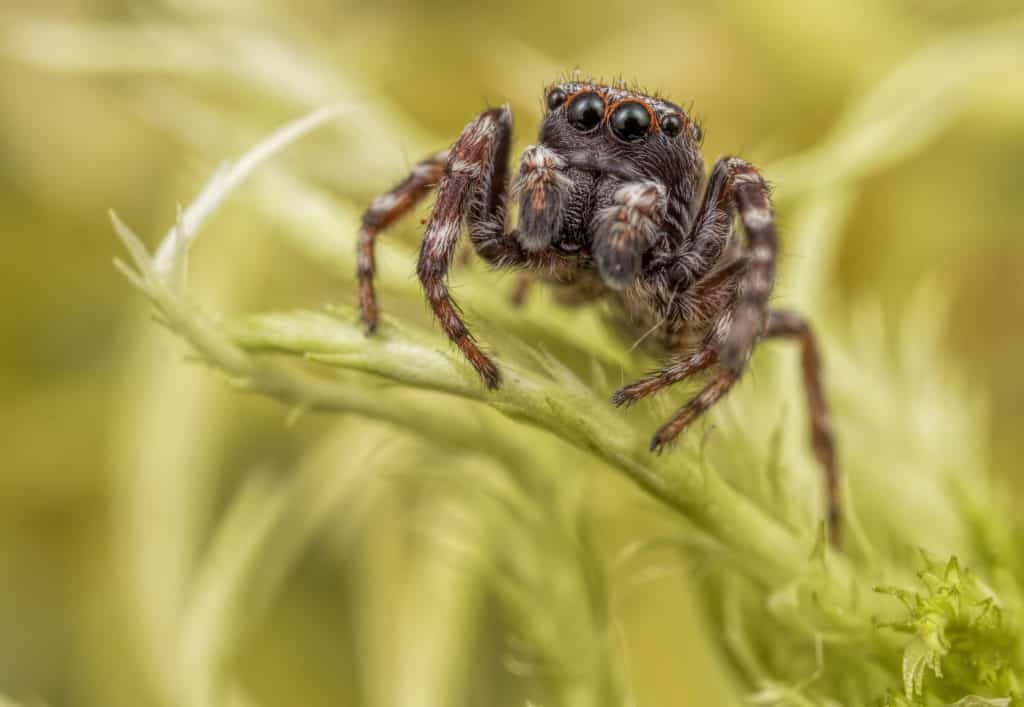
Spiders
One of the most commonly encountered arachnids in the UK is the spider. There are over 670 species of spider in the UK, consisting of 34 families. Over half of the species are tiny money spiders which can be as small as 1mm long!
Some people fear spiders, but they really don’t want to hurt you! All spiders have fangs containing small amounts of venom, which they use to subdue their small insect prey. They will bite if they feel threatened, but very few species in the UK have a bite powerful enough to penetrate human skin, and the venom is in such small quantities that it won’t cause any serious harm. Most spider bite scare stories in the media are usually caused by secondary infections from not keeping the wound clean. If you take some time to learn more about spiders, you’ll realise that they have fascinating lives. Spiders are found in every terrestrial habitat in the UK, and they are very useful as they provide us with free pest control by feeding on several agricultural and household pests.
Even though all spiders make silk, not all of them make webs, so if you see a spider on a web, it’s a useful identification feature. Spider identification usually requires a great deal of practice as there are so many species. Some of the larger and more colourful species can be identified easily in the field, but some of the tiny money spider species require a lot more practice and patience, as you can only identify them under the microscope.
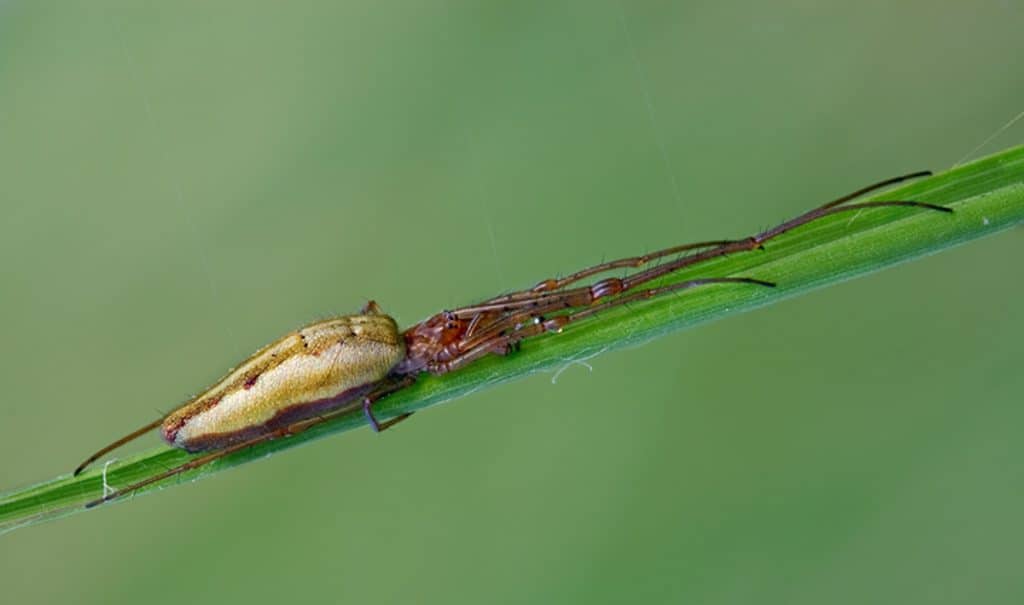
Identification Courses
Our arachnid courses are delivered by experts in the field, and they will equip you with the skills and knowledge to discover more about the various species and their ecology and biology. Our beginner courses are for anyone interested in discovering and exploring this invertebrate group. You can learn how to identify the key groups of arachnids and acquire or improve identification skills.
Training is led by expert tutors who are passionate about the subject. Taking place at venues across the UK, our courses are designed to progress your learning at a level to suit your needs.
Each course is part of a learning framework. You can see the course level descriptions here. Natural history courses are available at all levels from beginner through to professional training.
Identification Resources
Find out about the wonderful world of spiders and other arachnids or book onto a Spider Identification course by clicking the button above. Our experts in Spider Identification can guide you through the basics of identifying spiders in the field, as well as more advanced techniques to identify species using a microscope.
Spider Identification Chart Spiders have eight legs… and many of them spin webs to catch their prey… but how much more do you know about these fascinating, widespread but much maligned creatures? There are around 650 species in Britain.
AIDGAP Key to the Spider Families of the British Isles covers all 34 families of spiders known to occur in Britain
Harvestmen of the British Isles Identification Chart Harvestmen are spider-like invertebrates common in late summer and autumn. 34 species have been recorded in the wild in Britain and Ireland

